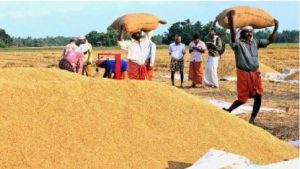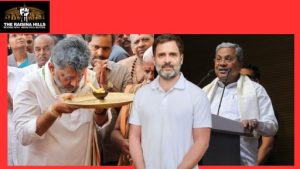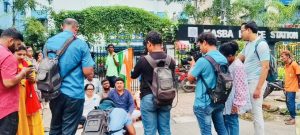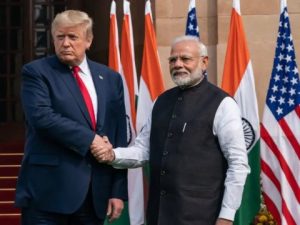All eyes on Himachal Pradesh’s revolving door electoral democracy

By Rahul Kumar Dubey
New Delhi, October16: With 69 lakh residents and 68 Assembly constituencies, Himachal Pradesh is a state with an interesting set of election pattern. Since the 1990s, it has had rotating governments with the Congress and BJP in charge of the government. This alternative form of government appears to be a normal occurrence, but mainly because of performance, a sizable portion of the population appears to be more inclined to support the incumbent BJP, indicating a current shift from the sinusoidal pattern of electing two major national parties, one term at a time.
Whereas the Indian National Congress is banking on anti-incumbency and the voting patterns of Himachal Pradesh, which hasn’t had a government in office ever since state assembly elections in 1993, the issue to be considered is whether the citizens of the state are willing to keep the pattern by ousting the incumbent government, or if this time, contrary to the predictions of various policy pundits, Himachal Pradesh will re-elect the BJP with a clear majority.
The performance of BJP over the past five years, however, has seemed to be breaking the trend of electing the ruling party in power in a sinusoidal pattern, especially in light of the defeat of the Indian National Congress in state assembly elections in 2012, which was caused by poor governance and the failure to keep election promises made in 2012, while in case of the BJP, the promises have not only been kept, but achievements have been marked at the same time. The evidence of breaking the sinusoidal pattern is that the BJP has already broken the same pattern in successfully retaining the government in Uttar Pradesh, which has not seen different governments since 1990.
Additionally, the structural damage that Congress has sustained will increase the likelihood that the BJP would sweep the state elections with a landslide. Virbhadra Pratap Singh, the tallest leader in the Congress and a six-term chief minister, is no more. Harsh Mahajan, the working president of the Congress in the Himachal Pradesh state till recent past and a former Minister in Congress government, left the party as well. However, his decision to join the BJP is seen as a major victory for the current government to establish the fact that the party which has not been able to manage the own party’s dynamics will eventually fail to manage the state.
Additionally, the Aam Aadmi Party’s participation in the Himachal Pradesh election, aiming to advance its chances of becoming a national party, will undoubtedly give the main national parties, a good fight.
While the BJP is engaging with the public through its good governance indicators and work completed in the last five years, such as being the first state to achieve 100 per cent Covid-19 vaccination, the first state to be declared as a smoke-free-state in India due to effective implementation of the PM-UJJWALA Yojana and Himachal Grihini Suvidha scheme, an open defecation free state, 100 per cent electrification, etc. The AAP and Congress party are essentially banking on freebies. Both AAP and Congress have pledged in advance of the election to provide eligible women between the ages of 18 and 60 a monthly stipend of Rs. 1000 and Rs. 1,500, respectively. This highlights the possibility that female voters might be crucial in the election-bound state. Taking a cue from the AAP model of freebies in the state of Punjab and Delhi, many of the 10-point promises made by Congress, such as 300 free power units for every family, free mobile health clinics, English-medium schools in every district, etc., have the AAP’s mark.
On the other side, the BJP is majorly focusing on engaging with the youth, senior citizens, women, farmers, and different communities, including SCs and STs, and informing them of the successes of the double engine government of the state and central governments, citing various government interventions, viz. farmers’ welfare programmes, social security programmes, subsidized electricity for the underprivileged, subsidized bus fares for women, the way the government is focused on the state’s economic recovery after the COVID-19 pandemic, the way the government has ensured affordable and quality healthcare by establishing AIIMS and medical colleges etc.
(Author is a researcher with Public Policy Research Centre)




